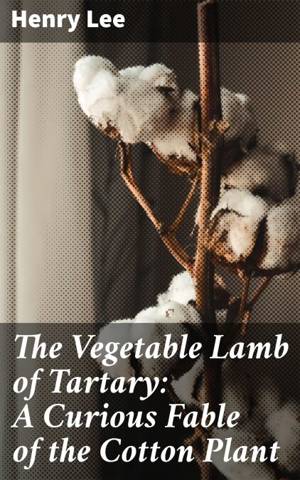
- Retrait en 2 heures
- Assortiment impressionnant
- Paiement sécurisé
- Toujours un magasin près de chez vous
- Retrait gratuit dans votre magasin Club
- 7.000.0000 titres dans notre catalogue
- Payer en toute sécurité
- Toujours un magasin près de chez vous
The Vegetable Lamb of Tartary: A Curious Fable of the Cotton Plant EBOOK
To Which Is Added a Sketch of the History of Cotton and the Cotton Trade
Henry Lee
Ebook | Anglais
1,99 €
+ 1 points
Description
In 'The Vegetable Lamb of Tartary: A Curious Fable of the Cotton Plant,' Henry Lee explores the fascinating myth of the vegetable lamb, a creature believed to grow from a mysterious plant in Central Asia. Lee's book delves into the origins of this myth and the way it captured the imagination of people in the medieval period. Through detailed research and engaging storytelling, the book sheds light on the cultural significance of this folklore and its influence on early botanical science. Lee's writing style is both informative and captivating, making this book a must-read for those interested in mythology, folklore, and the history of plant science. Henry Lee, a distinguished historian of science, brings his expertise to this project, offering readers a unique perspective on the intersection of myth and botanical knowledge. Lee's background in researching ancient myths and scientific discoveries gives him the credibility to delve deep into the subject matter and provide valuable insights for readers. I highly recommend 'The Vegetable Lamb of Tartary' to anyone looking to expand their knowledge of folklore, botanical history, and the cultural impact of myths. This book is a treasure trove of information that will leave readers fascinated and enlightened by the enduring legacy of the vegetable lamb myth.
Spécifications
Parties prenantes
- Auteur(s) :
- Editeur:
Contenu
- Nombre de pages :
- 643
- Langue:
- Anglais
Caractéristiques
- EAN:
- 4064066156053
- Date de parution :
- 17-12-19
- Format:
- Ebook
- Protection digitale:
- Digital watermarking
- Format numérique:
- ePub

Seulement chez Librairie Club
+ 1 points sur votre carte client de Librairie Club
Les avis
Nous publions uniquement les avis qui respectent les conditions requises. Consultez nos conditions pour les avis.






